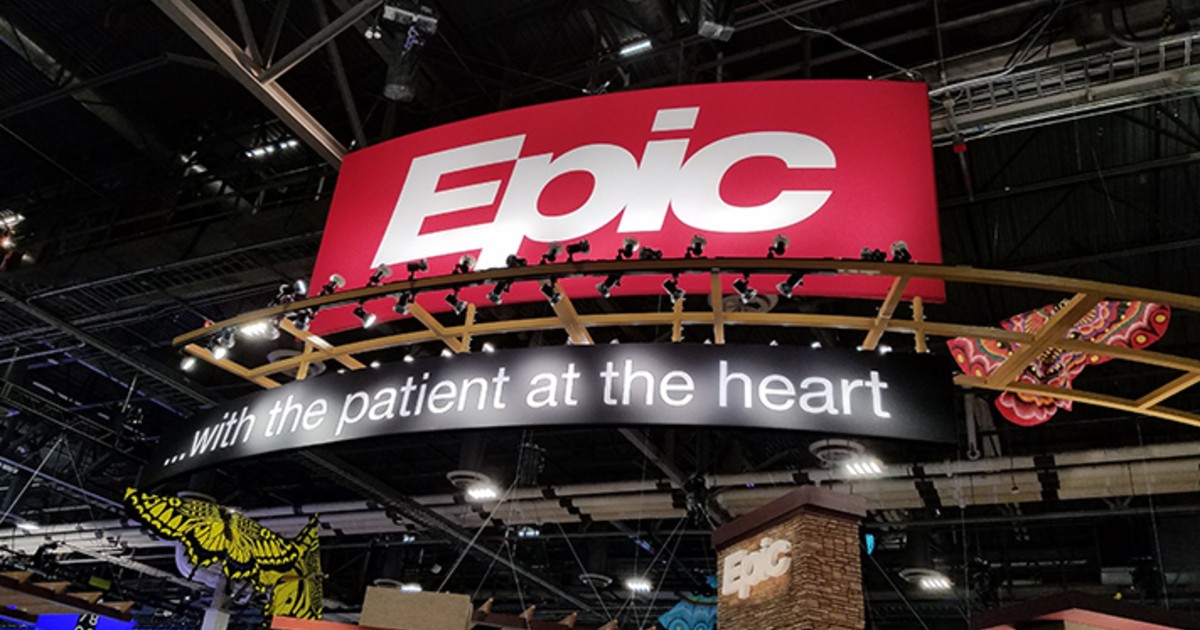Epic's Care Everywhere interoperability platform shows big jump in data exchange

Epic this past week released statistics showing that health systems using its interoperability platform Care Everywhere had shared more than 221 million patient records in a one-month period this fall.
The jump, said the electronic health records giant, represents a nearly 40% increase from the same period the year before.
Dave Fuhrmann, senior vice president of interoperability at Epic, said the growth reflects the desire for mobility and increasing demand for healthcare services amidst the COVID-19 pandemic.
"With COVID-19, we got to see some of the value of that [interoperability] work at Epic," he said. Particularly as patients sought telehealth treatment, providers having the ability to access records made treatment more seamless and efficient.
"It's been interesting to see the evolution over the course of many years," said Fuhrmann, who's worked on Care Everywhere since its inception at Epic. "The one thing that's stayed consistent: as you talk to provider organizations about interoperability, patients need to have that complete picture. We're going to do what's right for the patient."
WHY IT MATTERS
According to Fuhrmann, the increase in record-sharing rates mirrors a similar jump in the number of healthcare services delivered. In April, fears around COVID-19 led to a pause in nonurgent care – and, accordingly, Epic saw interoperability rates plummet as well.
As demand for care slowly rose again, so too did record sharing.
"I'm very optimistic about that," said Fuhrmann. In his eyes, that means "we're interoperating at the rate of care, across different vendors and different providers."
Another cause for cheer, he says, is the fact that about half the records exchanged through Care Everywhere are between Epic customers and those using a different EHR.
This, he says, shows "continued adoption" of interoperability across the board, made possible in part with frameworks such as Carequality. The vast majority (over 99%) of the exchanges are U.S.-based.
Going forward, he says, such seamless provider-to-provider exchange will be important when continuing to respond to the novel coronavirus pandemic.
"In the early days of COVID-19, there was a huge focus on getting the beds up and customers connected," he said. In the future, he said, interoperability will be useful, particularly when it comes to the two-dose nature of the vaccine.
For example, if a patient got one dose at their primary care provider and the second at their local pharmacy, "We expect interoperability to support that type of case," Fuhrmann said.
THE LARGER TREND
Healthcare industry leaders have repeatedly pointed to the ways COVID-19 has shone a light on the importance of interoperability.
But questions remain about sharing data in the context of the vaccine, with some states balking at the idea of sending patient information to the federal government.
ON THE RECORD
"When our hospitals began to fill up with COVID patients, we had to move patients among facilities to make the best use of our available capabilities and in some cases receive patients from other facilities as well,” said David Reis, former chief information officer at Hackensack Meridian Health in Edison, New Jersey, in a statement.
"Care Everywhere allowed health systems in New York and New Jersey to share common patient information seamlessly and in real time to improve the care provided, not just to patients with COVID-19, but to all patients," said Reis.
Kat Jercich is senior editor of Healthcare IT News.
Twitter: @kjercich
Email: kjercich@himss.org
Healthcare IT News is a HIMSS Media publication.
























